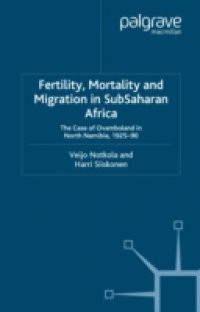Scanty evidence has been the major obstacle for studying historical demography in Sub-Saharan Africa. Our most certain knowledge of the development of nineteenth-century and early twentieth-century populations is based on a retrospective view of the post-Second World War censuses. In north Namibia the availability of continuous parish records dating from the 1920s, offers excellent possibilities to study population development at a regional level using primary sources. The study focuses on analyzing the development of fertility, mortality and internal migration in north Namibia among the Christian population since the mid-1920s to the 1990s, and tries to understand cultural, social, economic and political factors affecting population development.



















